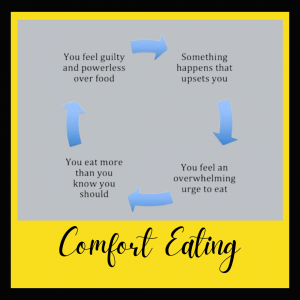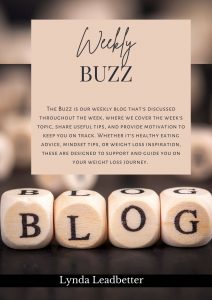
💛 Tackling Comfort Eating: Understanding It and Taking Back Control
We’ve all been there – reaching for a biscuit, bar of chocolate, or a takeaway after a tough day. Whether it’s stress, sadness, boredom or even celebration, comfort eating is something many of us struggle with at times.
The good news? You’re not alone – and with the right tools, you can break the cycle and regain control.
🧠 Why Do We Comfort Eat?
Comfort eating (or emotional eating) is when we eat for reasons other than physical hunger. Often, it’s an automatic response to feelings we don’t want to sit with. Some common triggers include:
Stress: Cortisol (the stress hormone) can increase cravings for high-fat, high-sugar foods.
Fatigue: When we’re tired, we’re more likely to crave quick energy – usually in the form of snacks or carbs.
Loneliness or sadness: Food can feel like a friend or source of comfort when emotions hit hard.
Habit: Over time, we can develop learned patterns like always snacking in front of the TV or ‘treating ourselves’ after a long day.
🔁 The Cycle of Comfort Eating
Emotional eating often leads to guilt, which can then lead to more eating to soothe that guilt – and the cycle continues. Recognising this pattern is the first step to changing it.
💡 Tips to Help You Break the Cycle
1. Pause Before You Eat
Next time you reach for food, ask yourself:
“Am I physically hungry – or is something else going on?”
Try the Hunger Scale – rate your hunger from 1 (starving) to 10 (stuffed). Aim to eat when you’re around a 3–4 (hungry but not ravenous).
2. Keep a Feelings Journal
Writing down how you’re feeling when you get the urge to eat emotionally can help you spot patterns. It’s a great way to build self-awareness.
3. Create a Comfort Toolbox
Make a list of non-food ways to comfort or distract yourself. For example:
Go for a short walk
Call or message a friend
Have a bath
Do a short breathing exercise
Listen to music or a podcast
Crochet, colour in, or read a book
4. Don’t Ban ‘Treats’
Restricting foods can backfire and lead to bingeing. Allow yourself the occasional treat mindfully – sit down, eat it slowly, and enjoy it. No guilt.
5. Practise Self-Compassion
Be kind to yourself. If you’ve comfort eaten, reflect on why – not with shame, but with curiosity. What triggered it? What could you do differently next time?
6. Talk About It
Use your BeeWeighed group for support! You’re not alone, and opening up can be hugely powerful. Chances are, others will relate and offer tips that work for them too.
🐝 Remember…
Comfort eating isn’t about lack of willpower – it’s about unmet emotional needs. By recognising your triggers and building healthier coping strategies, you can shift your habits and feel more in control.
You’re human, you’re doing your best, and every step counts. 💛
DON'T FORGET TO CHECK OUT THE OTHER RESOURCES
SEO Keywords:
• slimming groups online
• online slimming groups
• calorie counting
• slimming groups Manchester
• slimming groups Cheshire
• slimming groups near me
• bariatric support online






- #BariatricSupport, #BariatricSupportOnline, #BariatricWeightLossSupport, #beeweighed, #BestSlimmingGroupInMyArea, #BestSlimmingGroupUK, #caloriecounting, #CalorieCountingSupport, #CheshireWeightLossGroup, #HealthyLivingSupport, #JoinASlimmingGroup, #ManchesterWeightLossGroup, #OnlineCalorieCounting, #OnlineSlimmingGroups, #OnlineWeightLossSupport, #SlimmingGroupCheshire, #SlimmingGroupManchester, #SlimmingGroupsNearMe, #SlimmingGroupsOnline, #SlimmingGroupSupport, #slimmingworld, #SupportForWeightLoss, #WeightLossGroupsUK, #WeightLossHelp, #WeightLossJourney, #weightlosssupport, #weightwatchers, #ww
CHRISTMAS SURVIVAL
🎄 BeeWeighed’s Christmas Survival Guide 🎅 Stay on Track, Still Have Treats & Enjoy the Magic Guilt-Free! Ah, Christmas… the season of twinkling lights,
LOW CARB
Let’s Talk Low-Carb! Why Cutting Back on Carbs Can Work Wonders (And Still Be Delicious!) 🍳 Carbs. They’re fluffy, crunchy, crispy, chewy — and sometimes,
MINDFUL EATING
🍽️ Mindful vs. Mindless Eating: Which One Are You Doing? Let’s Find Out! 🧠✨ Have you ever found yourself finishing a whole bag of
